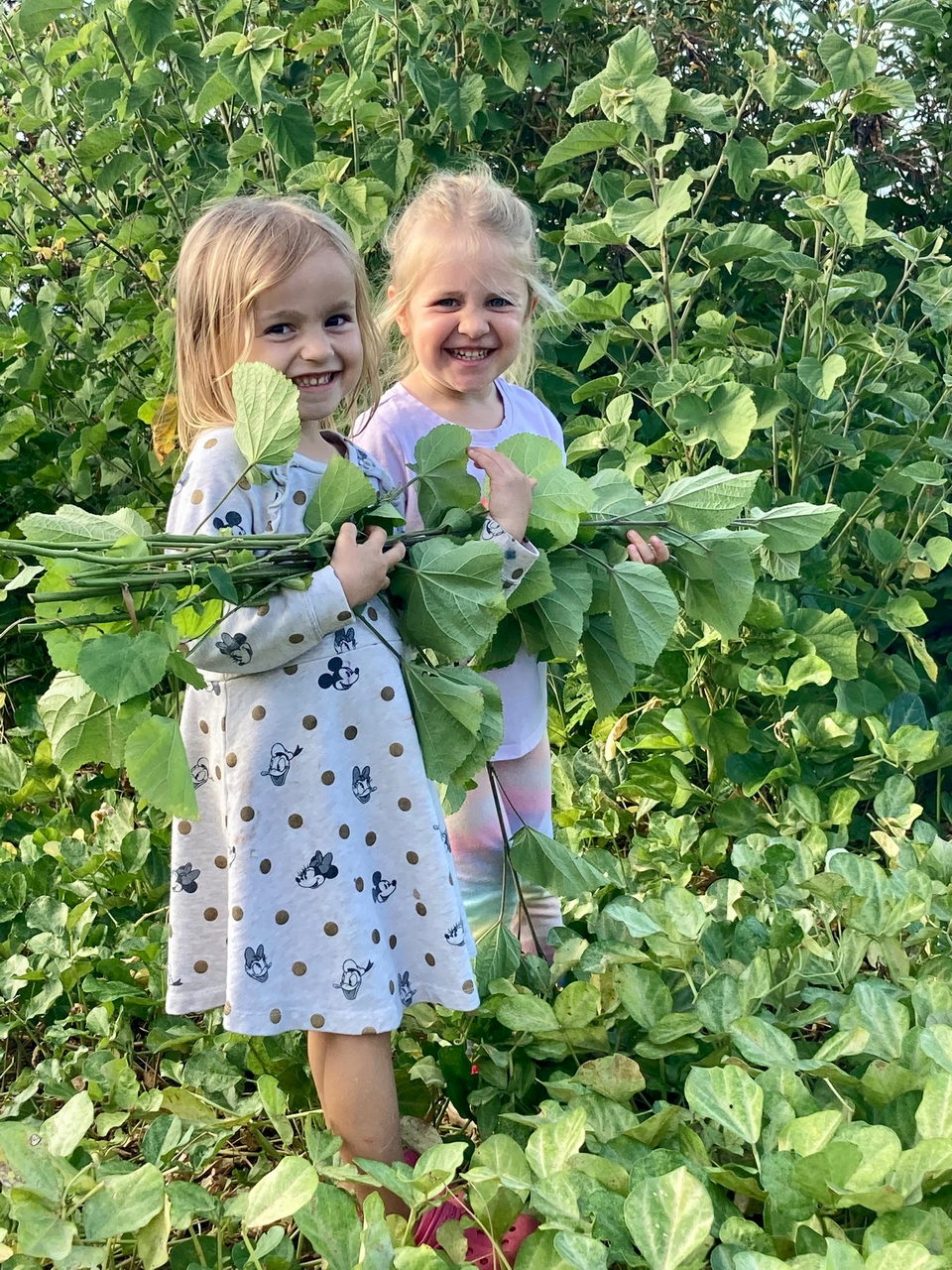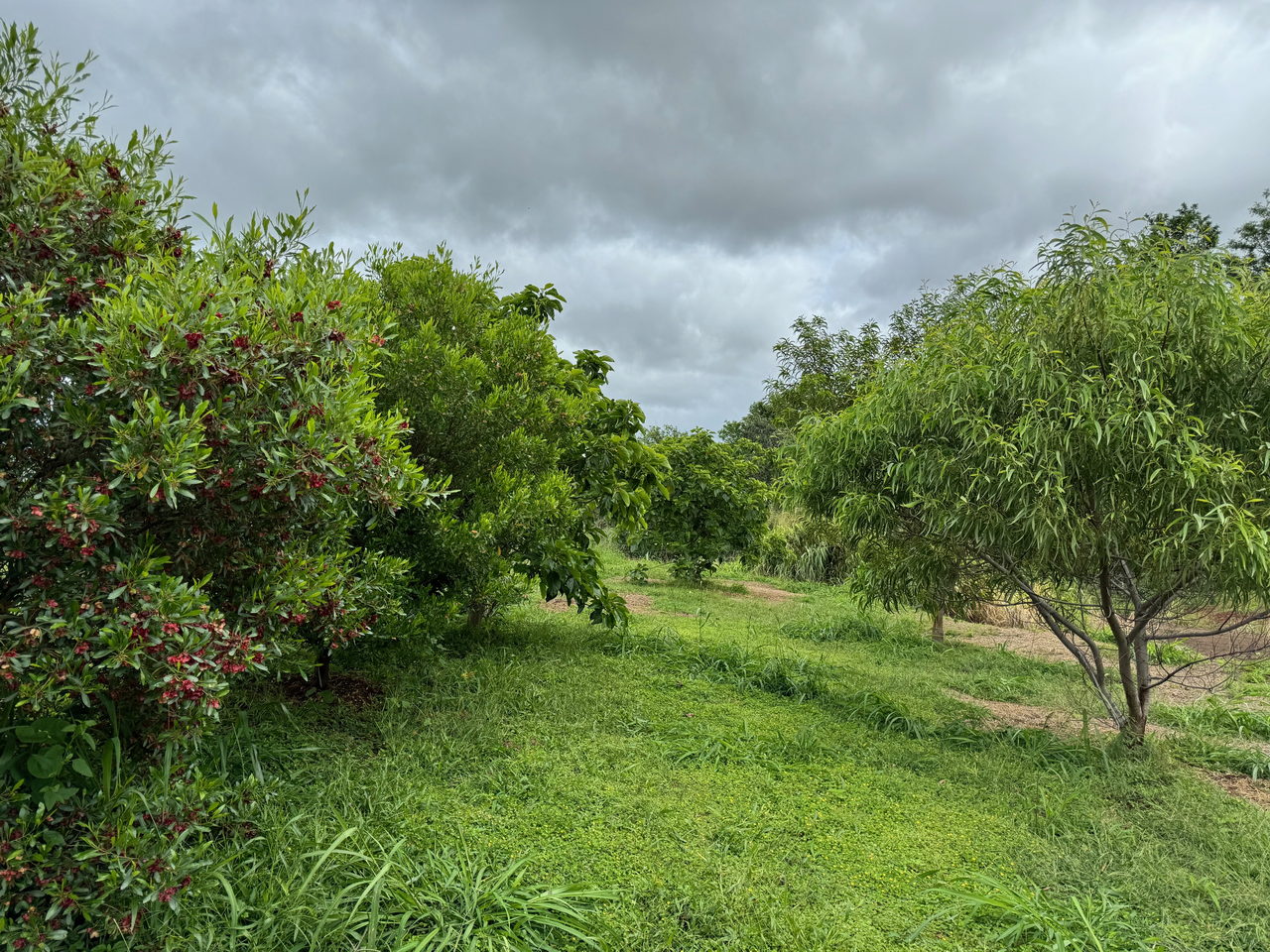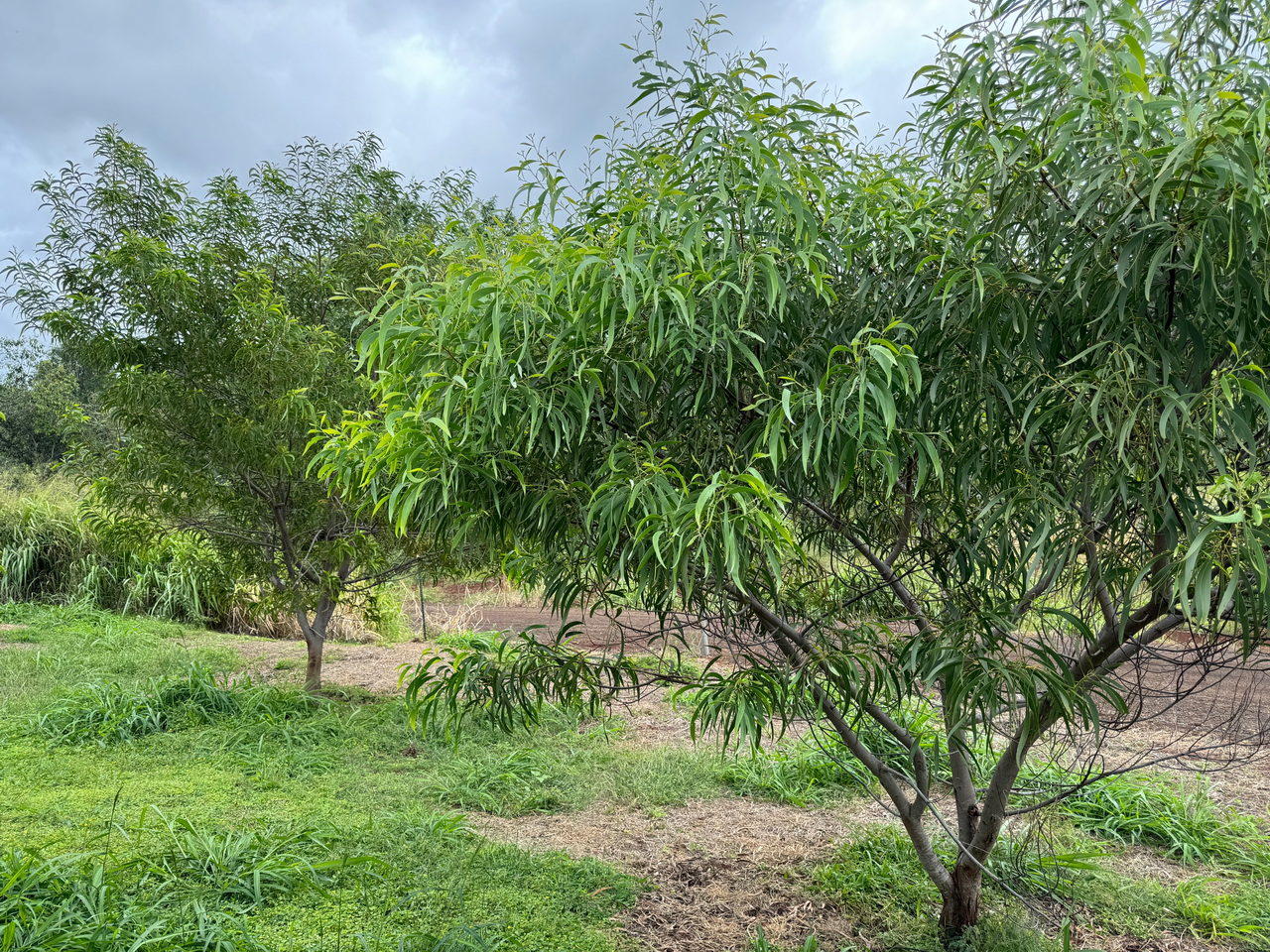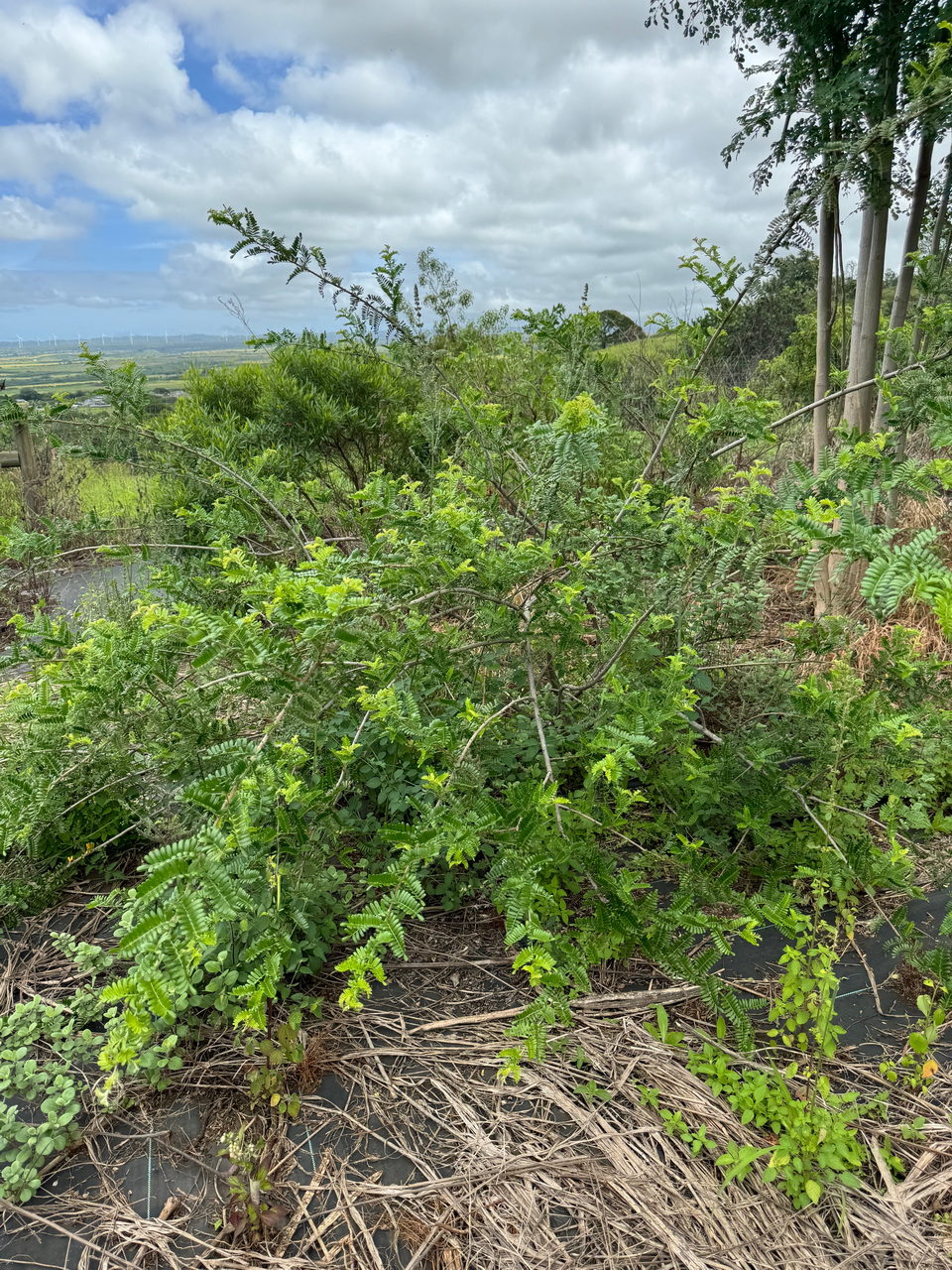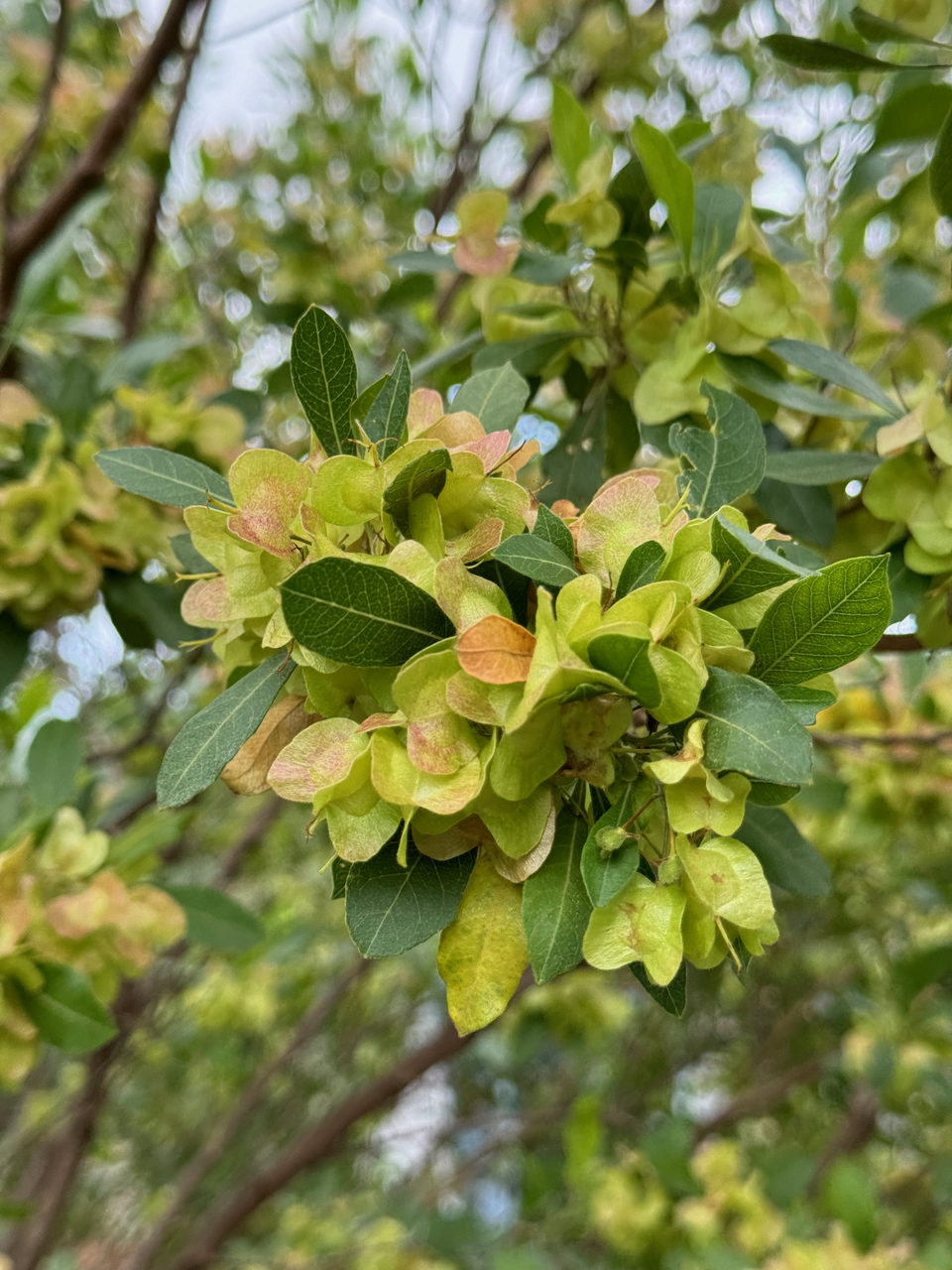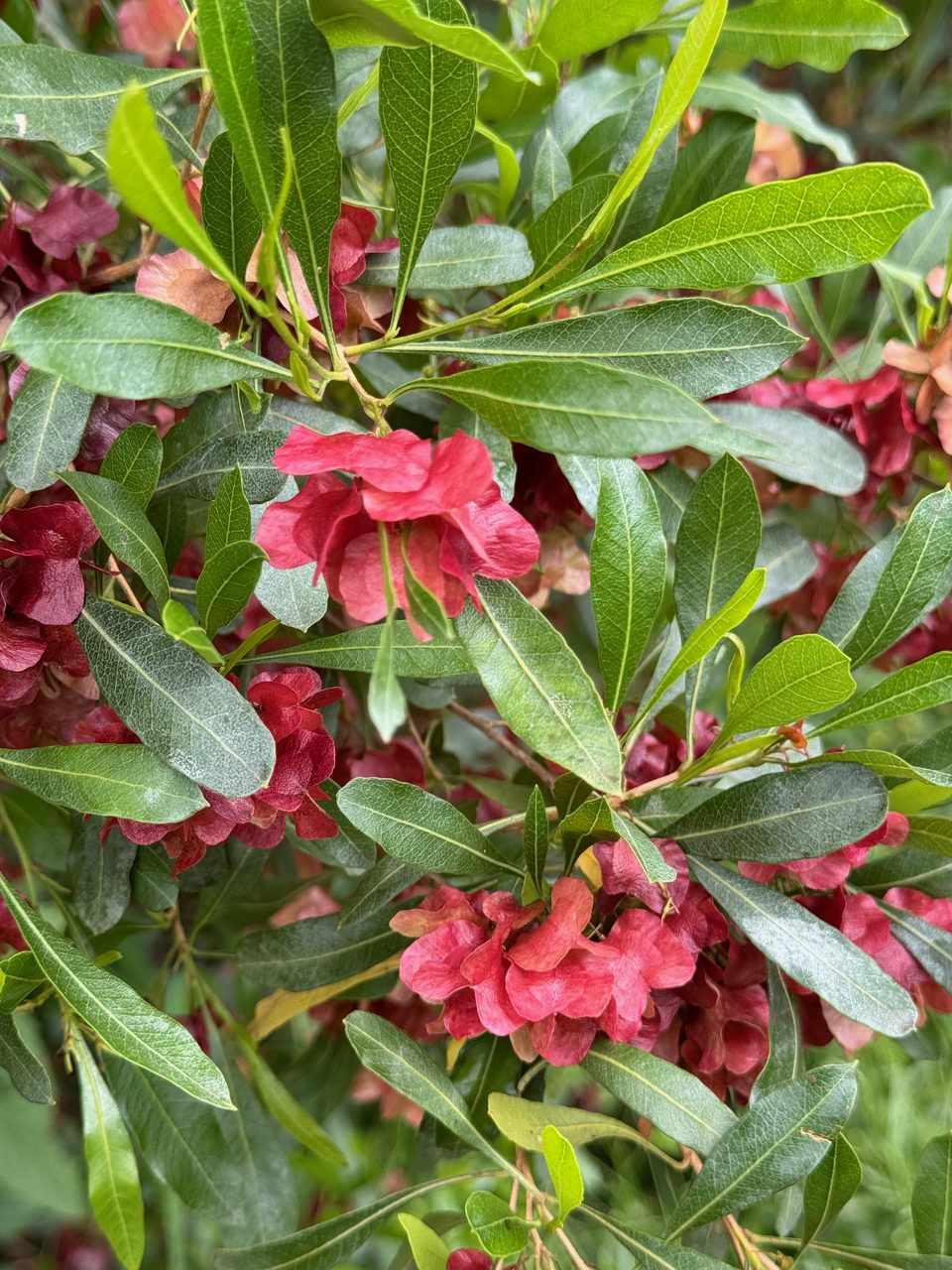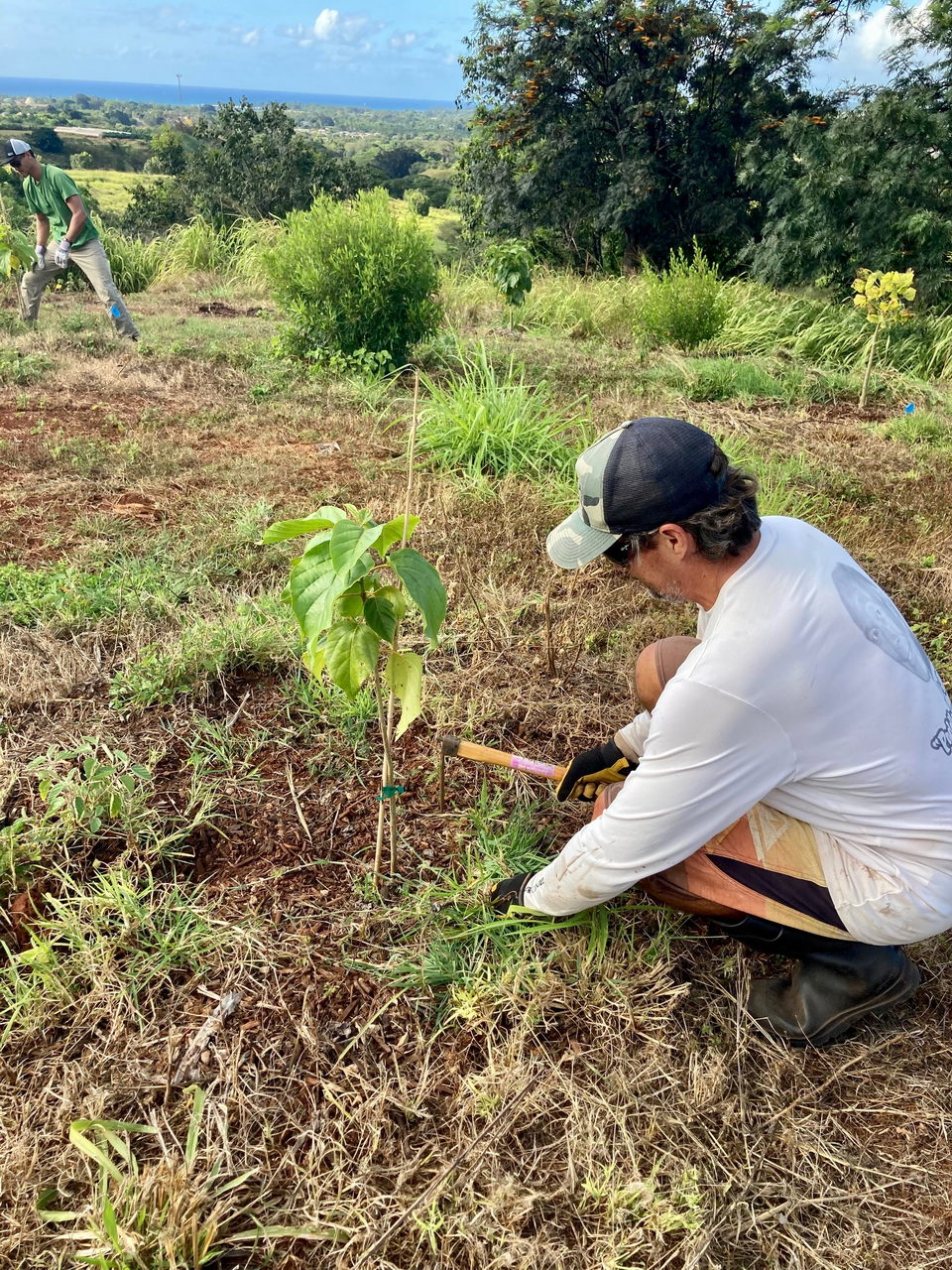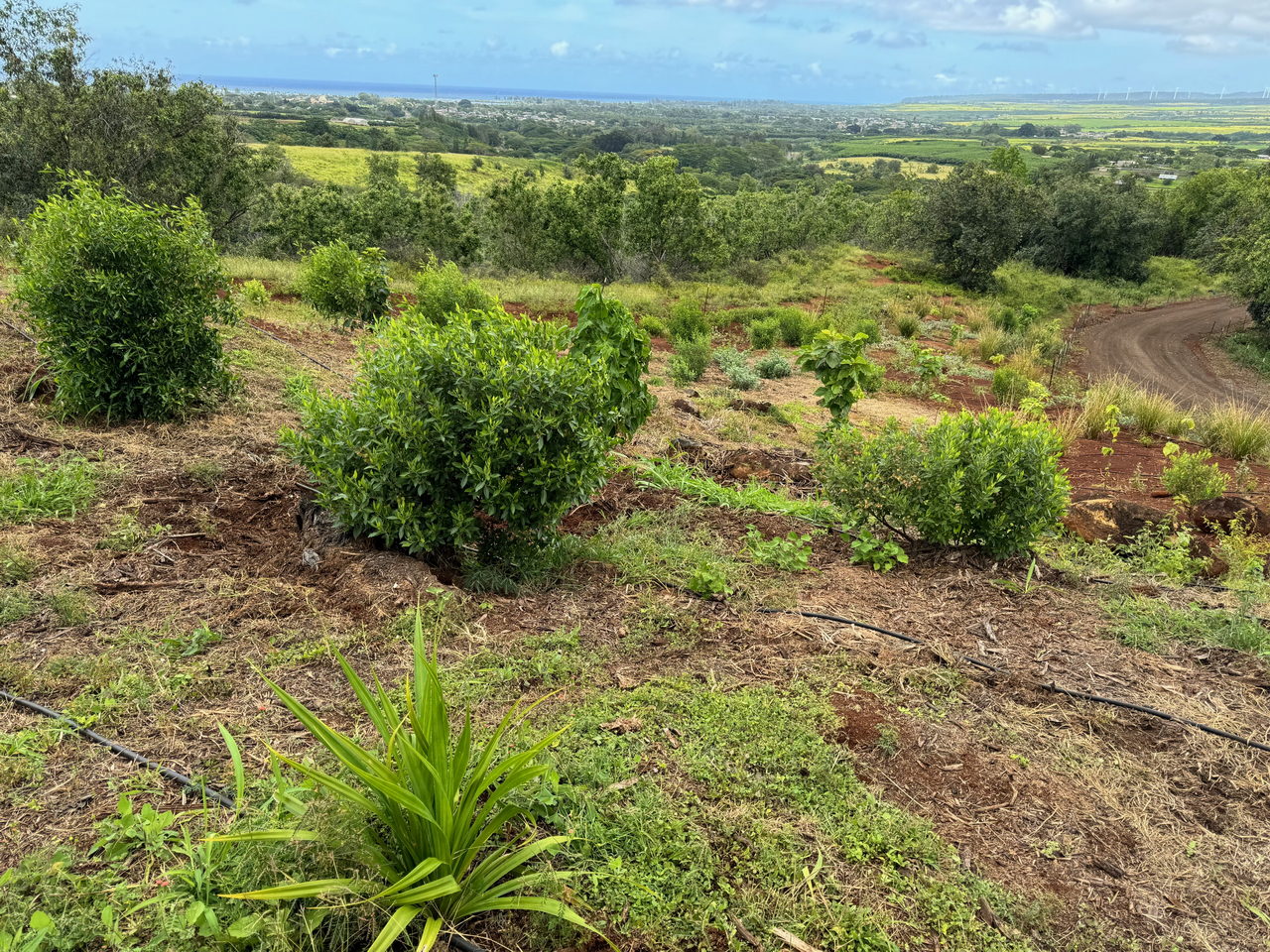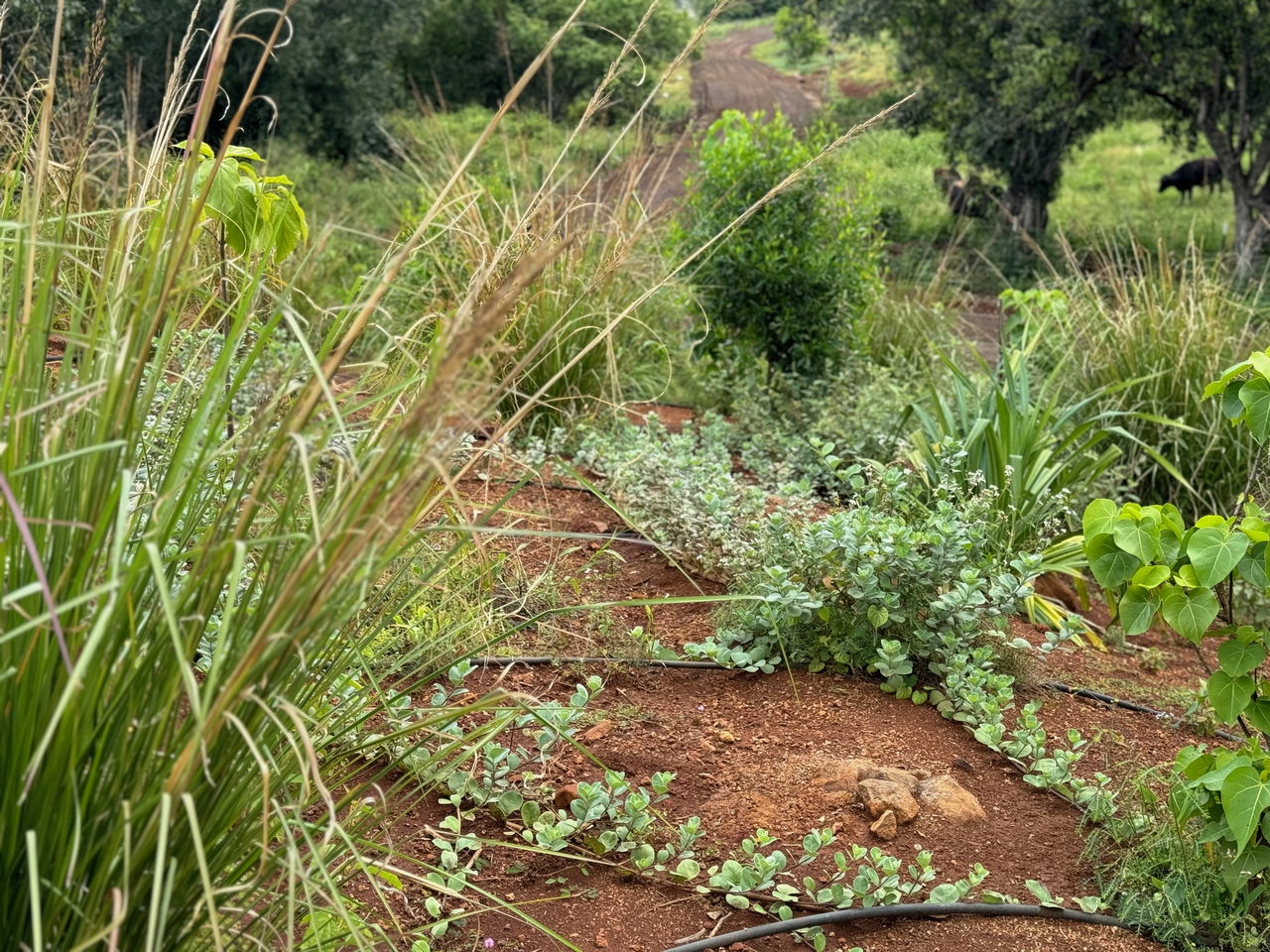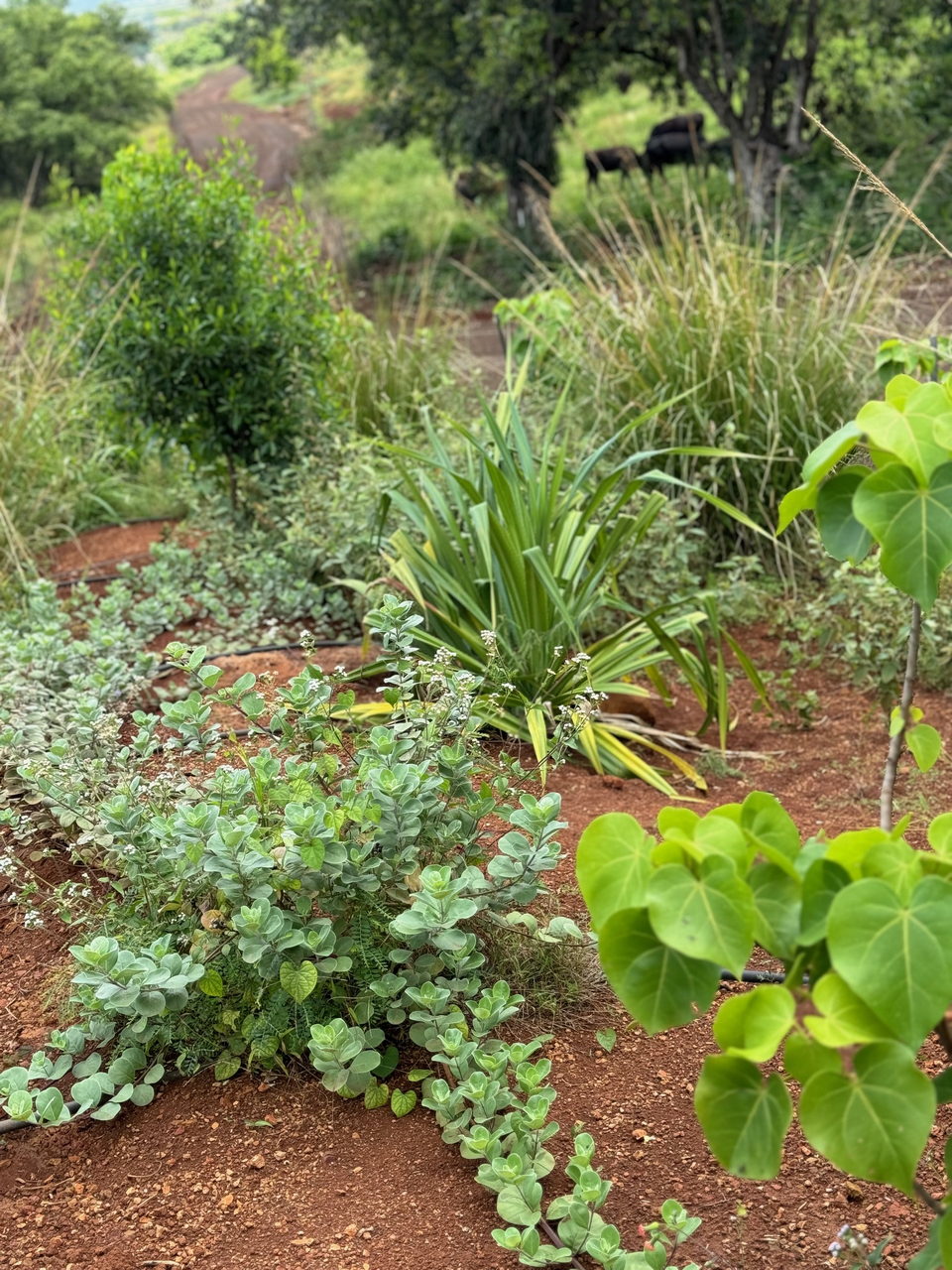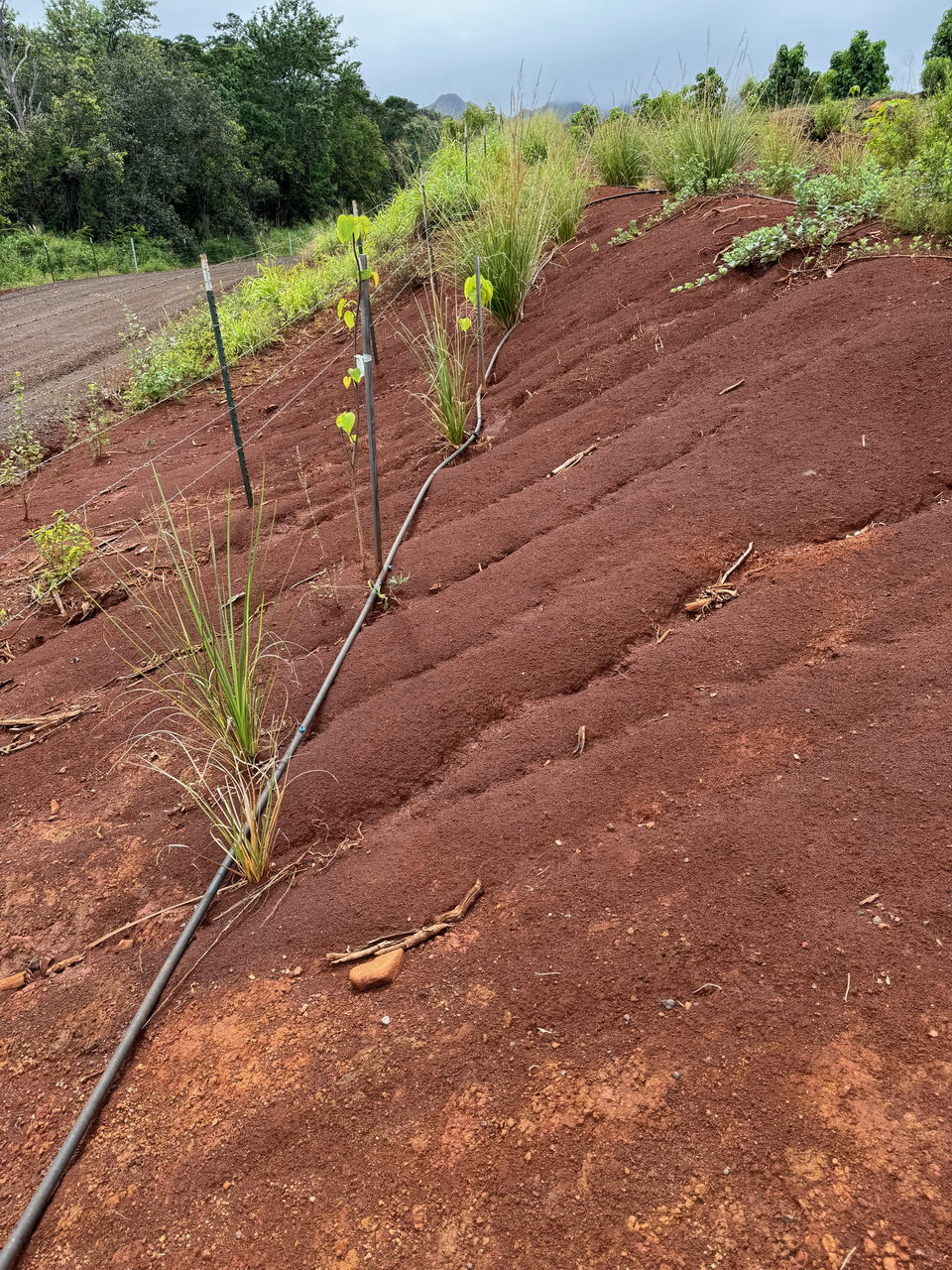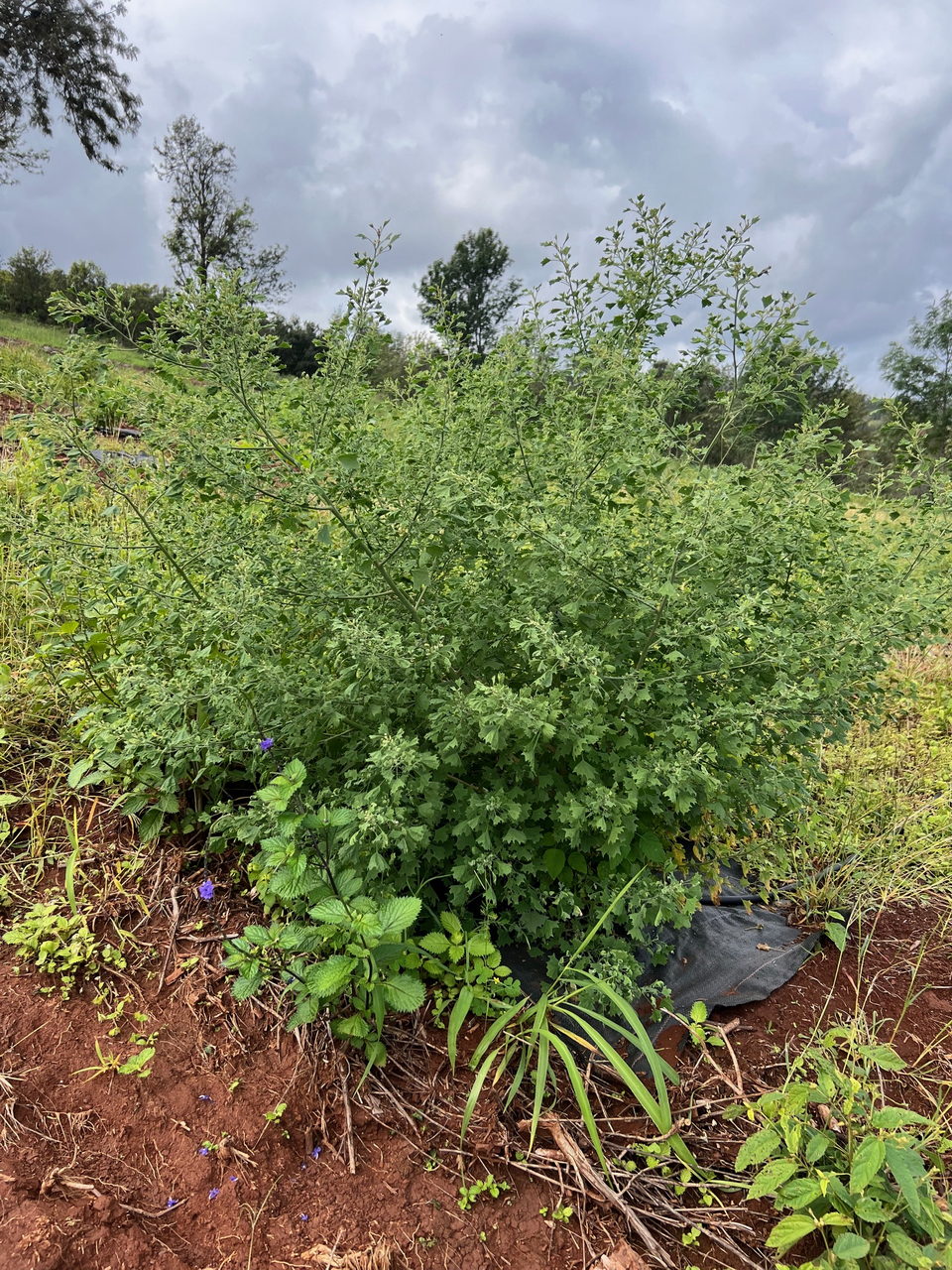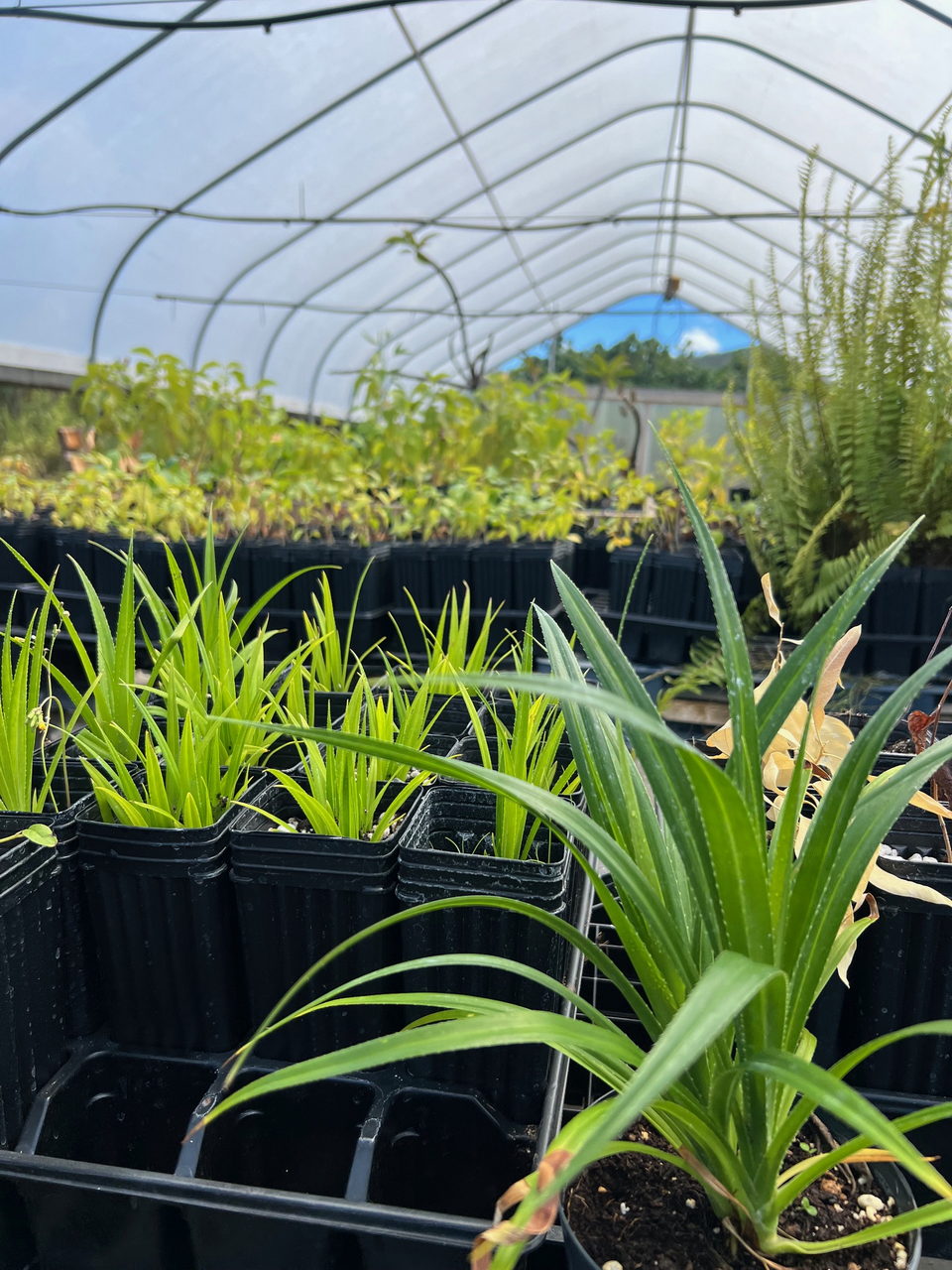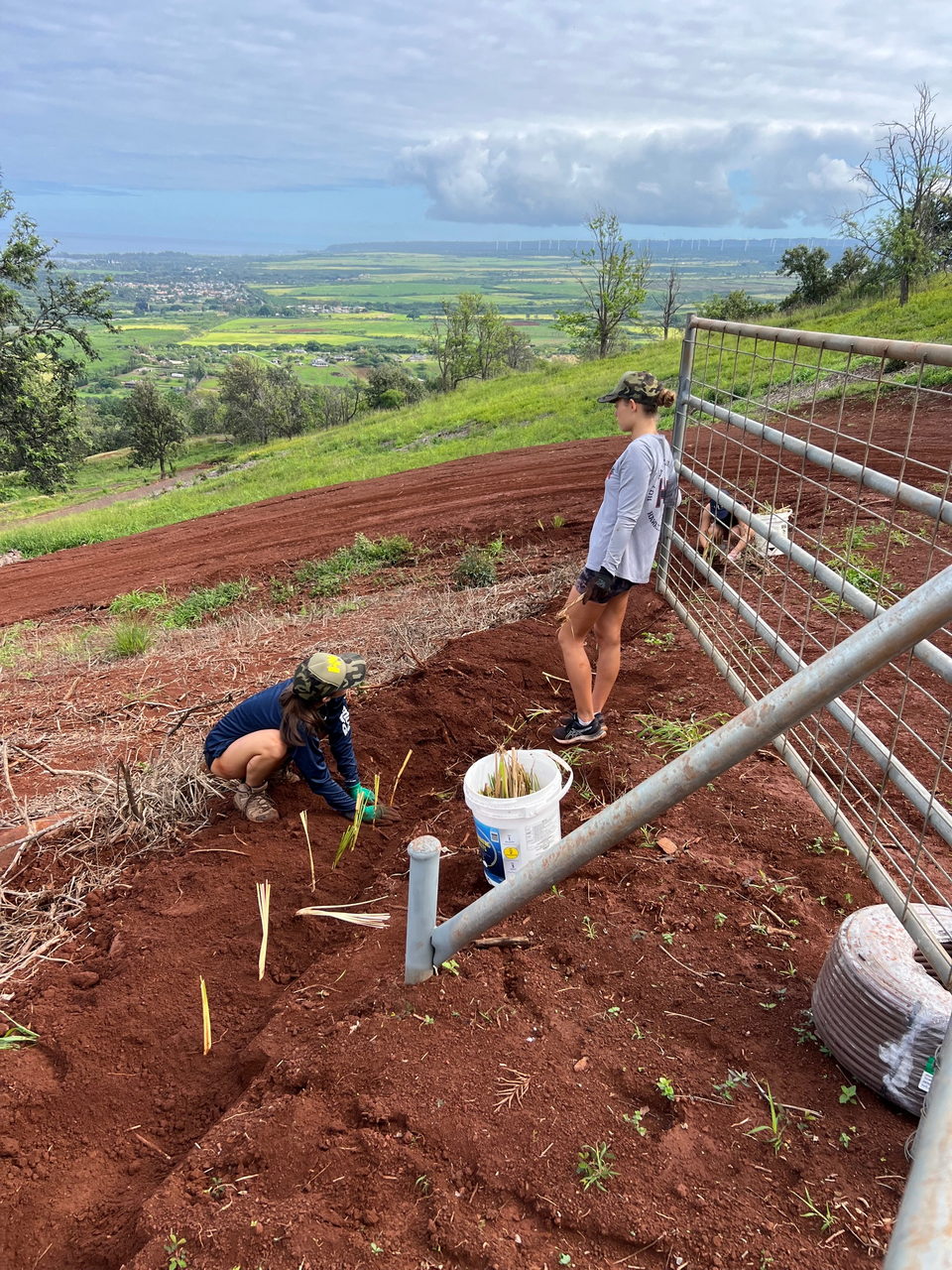PROJECTS
Native Zone 1: Section 1
With a donation from an eco-conscious philanthropist, as well as an accompanying employer match donation from the Porticus Foundation, section 1 of Native Zone 1 was created as a test site for native restoration in the mesic zone of Oahu’s Wai’anae Mountain Range. After consulting with forestry experts ‘a’ali’i, milo, kou, koa, pōhinahina, ʻŪlei and others were selected and purchased at local native nurseries. These initial natives were planted in the fall of 2019. In addition, nearby Corteva Agriscience offered up a large greenhouse to support native tree and shrub propagation. Site appropriate seeds were provided by the Forestry and Wildlife Division of the US Dept. of Land and Natural Resources. Cuttings and additional seeds were collected to begin the propagation process. Native Zone 1 is now providing a powerful seedbank for future plantings and local pollinators as well as birds collect there.
Native Zone 1: Section 2
In 2023 with a corporate donation from Title Guaranty Hawaii along with employee volunteers and their family members the nutrient poor and erosion prone lower area of Native Zone 1 was planted with both purchased and on site propagated native trees and shrubs. This group was not only tasked with planting all of section 2 but also began propagation for Native Zone 2. Native Zone 1 is now providing a powerful seedbank for future plantings and local pollinators as well as birds collect there.
Native Zone 2
With the help of a matching grant from the USDA Natural Resource Conservation Service, Native Zone 2 on the slope of Mount Ka’ala has been planted with over 2,700 native trees and shrubs in an effort to increase forest resilience in an area challenged with increased temperatures and nutrient poor soil. Throughout this process, approximately 1,000 volunteers from Oahu (of all ages) helped propagate, maintain and plant 22 varieties of natives and canoe plants in order to increase biodiversity, mitigate erosion, and restore habitats. In our expansive greenhouse native seeds and cuttings were planted in starter pots or dibble tubes and cared for. The planting site was prepared by removing invasives. Next, fencing and temporary irrigation was installed. Holes were dug. Numerous planting events were held where participants; planted, added soil amendments and surrounded each plant with weed matting. While these natives establish they are maintained by weeding and irrigated with drip irrigation.
CONTACT US


